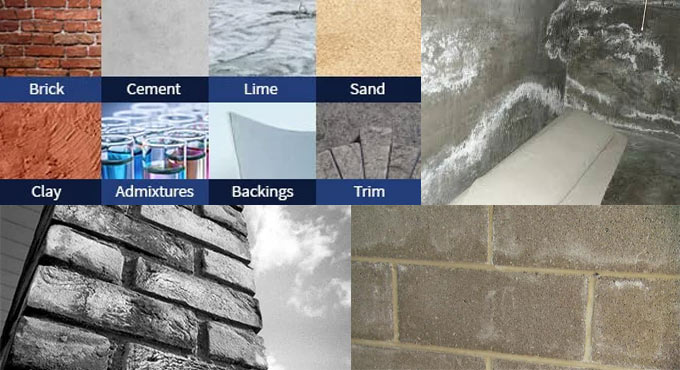
Definition, causes and remedies of efflorescence in masonry & other building surfaces

Efflorescence stands for a fine, white or greyish, powdery deposit of water-soluble salts that is present on brick, concrete, stone, stucco or other building surfaces when the water vaporizes. Besides, efflorescence also exists on floors and walls and requires special attention. It is often mentioned as "whiskers?.
These efflorescent salt deposits is found at the worst times, normally about a month as soon as the building is developed, and sometimes as long as a year after finishing of structure.
Efflorescence is found in both indoors and exterior, and it can differ in frequency and intensity because of the existence of moisture and temperature.
The efflorescence happens for the following three factors :-
? Existence of water-soluble
? Salts are converted into a soluble solution because of moisture content.
? The transmission of salts through a material to its surface that leads to vaporization of the moisture and cause the salts to crystallize and thus efflorescence is formed.
Moisture is mainly formed due to water, rain and snow and may affect the extent of efflorescence. Condensation, groundwater tapering and interior activities also may influence the extent of moisture formation.
In several cases it is found that efflorescence may happen throughout home construction. If masonry units are left behind all through the night during construction, they can consume moisture from damp soil and rain. It is recommended that masonry units should be wrapped and left in pallets to reduce the risk of efflorescence during a construction project.
The following installation issues associated with building surface result in creating efflorescence
? Improper application of through-wall flashing
? Utilization of masonry devoid of adequate ventilation
? Utilization of masonry in areas where a perfect moisture barrier does not exist
? Joint material failure
? Imperfect ground storage
How to get rid of efflorescence - The following measures should be taken to avoid efflorescence:
1) Hydrophobic Sealant: Use a saturating hydrophobic sealant to a building material surface to resist the immersion of water. The sealant also will resist water from passing through a building material.
2) Capillary Breaks: Set up capillary breaks like polyethylene sheeting among a building material and soil to reduce the risk of salt penetrating the material.
3) Standard Masonry Construction: Apply overhanging copings, eaves and flashings will help in reducing the risk of entering water into a wall.
4) Better Emphasis on Landscaping and Sprinklers: Give concentration to landscaping and sprinklers will guarantee to avoid water from reaching permeable building materials.
5) Set up Grout with Mechanical Vibration: Compile grout with mechanical vibration will control the occurring of voids in the grout.
6) Apply Dense Tooled Mortar Joints: Provide dense tooled mortar joints to minimize the permeable nature of a wall, making it strong for salts to pass through it.
7) Utilizing Grout Admixtures: Various grout admixtures like chemical additives should be used since they can make flow of a grout mix better and minimize its water content all together to lessen voids in grout.
8) Preserve Masonry Materials Properly: Retain masonry materials off the ground and wrap them with water-resistance materials to safeguard these materials from groundwater and precipitation.
Article Source: www.nitterhousemasonry.com


